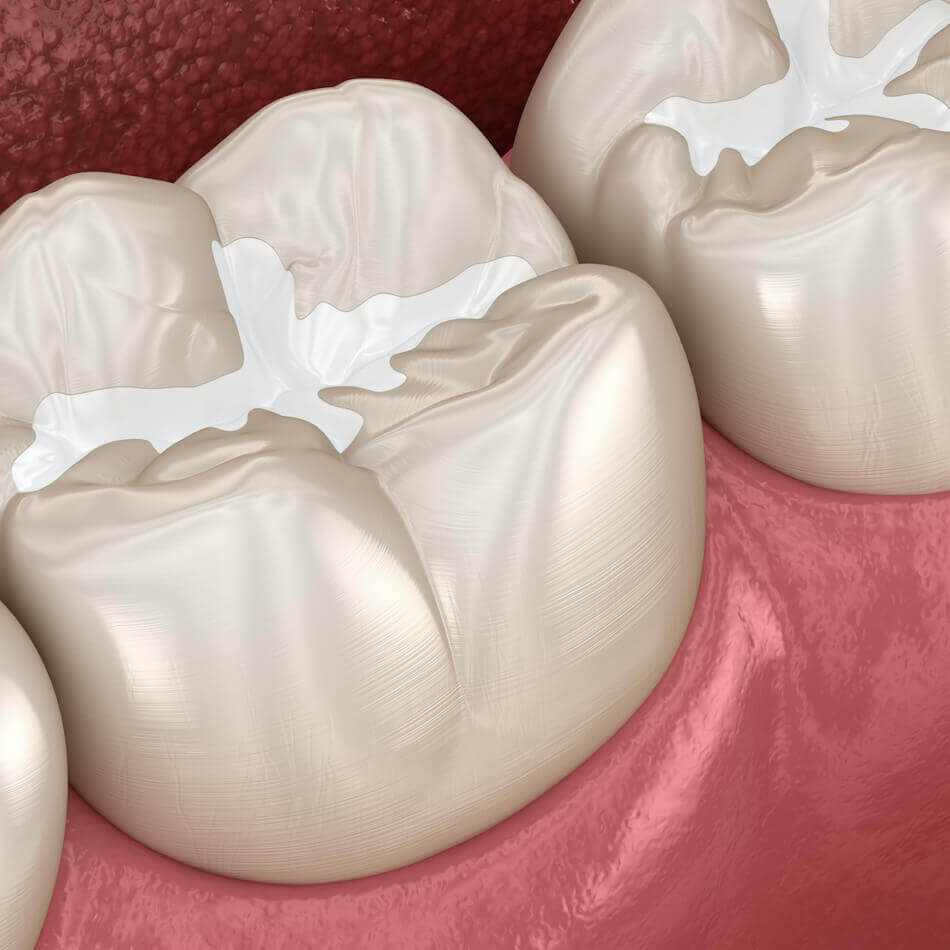There are many ways to protect your teeth from cavities and decay, and dental sealants may be one smart step you can take to preserve your beautiful smile. While regular brushing and flossing along with preventative dental care are the best places to start for a great smile, getting sealants for kids and adults can be a very advantageous way to cement your good oral habits.
Dental sealants have been proven to be quite helpful in children’s dental health. In fact, when they are applied to molars, they can reduce the risk for cavities by almost 80%. However, sealants do not have to be only used on children’s teeth, adults can also benefit from sealants. Learn more about what dental sealants are and how they can improve overall oral health so that you can take the best step for you or your child today.

What Are Dental Sealants?
Dental sealants are very thin layers of a plastic coating that can be applied on the chewing surface of your teeth. Initially a liquid, a sealant is hardened with a special light to create an impermeable surface. They are most often placed on the back teeth, which are notoriously difficult to clean effectively. Sealants are no substitute for brushing and flossing, but they can keep cavities from forming and may even stop early stages of decay from becoming full-blown cavities.
Sealants are considered to be a much cheaper and healthier alternative to having cavities filled. Cavities lead to weakening of the teeth and possible future dental issues. Keeping cavities out of the teeth in the first place can lead to stronger and healthier teeth through childhood and well into adulthood.
Who Needs Sealants?
Children and adults can benefit from sealants, but the earlier you get them, the better. Usually, children get sealants applied to their back molars between the ages of 6 and 12. While they are most frequently applied to new adult molars to protect these important teeth from decay, they may also be used on baby teeth if they are highly grooved. Some children may need to have sealants reapplied if the coating gets chipped or if it wears away.
While sealants are most frequently used for children, some adults may also benefit from this dental treatment. Dr. Pham may recommend sealants for you if you have never had sealants applied or if your old sealants have worn away. Your molars should also be cavity-free before application.
How Are Sealants Applied?
Sealants can usually be applied in only a few minutes at the end of a dental cleaning and examination. To begin, your mouth must be completely dry. This is done with suction along with cotton that is placed along the edge of the mouth to absorb saliva. Next, the dental professional will roughen up the tooth’s surface with an acidic material to make the sealant stick. The teeth are again rinsed off and dried before the sealant is painted onto the tooth. The process is finished by curing the sealant with a special light to ensure it hardens completely.

Benefits of Sealants for Kids and Adults
According to the United States Centers for Disease Control and Prevention, sealant application prevents cavities and protects teeth, particularly during the younger years. In fact, research shows that sealants can prevent 80% of cavities for the first two years following application and 50% of cavities for another two years. Sealants typically last for 8 to 10 years if they are cared for well.
Because they can prevent cavities, sealants are also great cost-saving options as the CDC predicts that they could save families who are not currently using them up to $300 million combined in future dental treatments. Sealants provide all of these great benefits with very few negatives. In fact, they are nearly invisible to the naked eye. In addition, they are easy and quick to apply and completely painless. Clearly, they are far superior in every way to having cavities filled.



